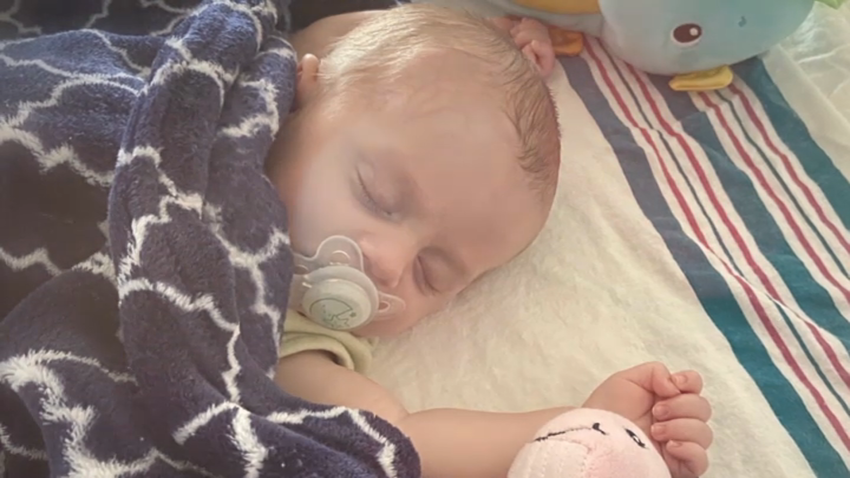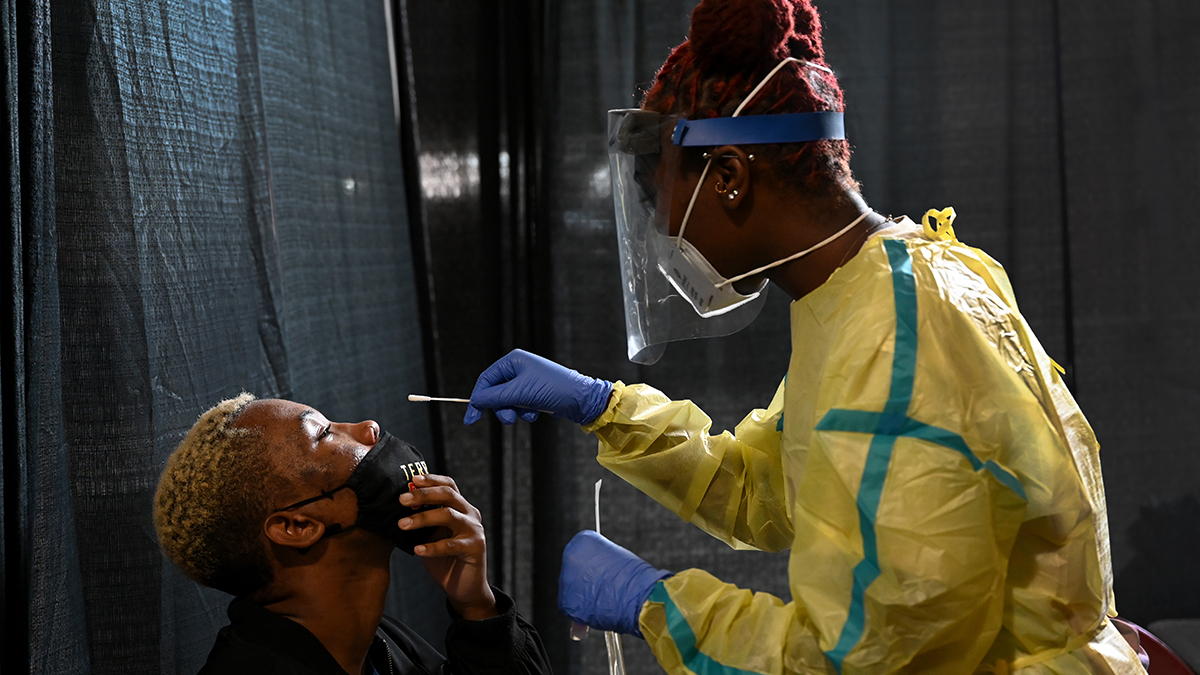Nearly nine months after the first cases of the novel coronavirus were reported in central China, more than 1 million people have died worldwide from COVID-19.
The coronavirus pandemic is set to be a major topic in 2020's first presidential debate Tuesday night when President Donald Trump and Democratic candidate Joe Biden meet for the first time.
Because of the pandemic, there won't be a handshake or even an elbow bump.
But as we get further into fall, many people are trying to bring back favorite activities — with precautions against coronavirus.
D.C. nightclub HEIST is taking a run at a socially-distanced event on the roof of the Kennedy Center.
Those who attend the “socially responsible experiment” are meant to be seated at one of 60 tables that each have a limit of six people. Organizers also promise a DJ-curated playlist — although dance floors aren't allowed because D.C. law currently only allows seated service.
There’s clearly an appetite for the return of nightlife: HEIST says the event sold out in 15 minutes.
Local airports are also preparing for people to leave home. If you fly out of Reagan National or Dulles airports, you’ll soon see some new acrylic barriers separating security staff from passengers.

TSA plans to purchase and install 1,230 acrylic barriers at airports across the country.
D.C. Public Schools are also getting ready to bring students back to classrooms. Ballou STAY has already brought back barbering and cosmetology students, and twelve more schools will open in the ”coming days and weeks,” the city says:
- Bancroft ES
- Cardozo EC
- Eastern HS
- Kimball ES
- Kramer MS
- Ludlow-Taylor ES
- Mann ES
- Noyes ES
- Tyler ES
- Phelps ACE HS
- Roosevelt HS
- Roosevelt STAY
Here's where we stand as the coronavirus continues to change our lives in D.C., Maryland and Virginia.
What the Data Shows
There’s good news in the capital region’s fight against coronavirus. D.C., Maryland and Virginia all have lower seven-day average new case numbers than they did one and two weeks ago.
Overall, the number of people impacted by coronavirus grows everyday, even though the pace is slowing in some areas.
West Virginia surpassed D.C. in the number of COVID-19 cases over the weekend.
West Virginia has reported 15,692 cases while D.C. has 15,300. About twice as many D.C. residents have died, however.

West Virginia, which has a population of 1.8 million compared to D.C.’s 706,000, contains a lot of rural land. It was the last state to report a confirmed coronavirus case as the outbreak grew in March.
But the growth of West Virginia’s cases highlights how outbreaks haven’t been confined to densely populated cities.
West Virginia has far more active cases (currently 4,014) than in D.C. (currently 2,559).
West Virginia also had a sizable single-day increase of 180 new cases on Tuesday.
Despite all this, the state’s daily positivity rate is still fairly low at 3.45%.
The map below shows the number of coronavirus cases diagnosed per 100,000 residents.
Coronavirus Cases in DC, Maryland and Virginia
COVID-19 cases by population in D.C. and by county in Maryland and Virginia
Source: DC, MD and VA Health Departments
Credit: Anisa Holmes / NBC Washington
Local Coronavirus Headlines
- As school districts put together plans to start returning students to classrooms, some teachers in Fairfax County, Virginia, who aren’t comfortable returning may need to anyway.
- D.C. granted permission for six indoor venues to host performances. D.C. also granted permission for the Adams Morgan business improvement district to host outdoor movies.
- A judge sentenced a Maryland man to a year in jail for throwing parties that exceeded capacity restrictions at the beginning of the governor’s coronavirus emergency order.
- D.C. Public Schools buildings are being assessed to determine if they can be COVID-ready for some in-person learning to begin Nov. 9, sources told News4.
- The Fairfax County School Board voted on Tuesday to start hybrid learning next month.
- The Loudoun County school board voted to begin a hybrid learning plan that prioritizes getting younger students back to in-person classes.
- The Smithsonian reopened four more museums to the public beginning on Friday, Sept. 18. Two more are set to reopen on Friday, Sept. 25.
- Five states were added Monday to D.C.'s list of "high-risk" states. Three other states were removed from the list.
- D.C. launched new coronavirus metrics and Mayor Muriel Bowser is set to announce the reopening of certain services in the next two weeks.
- Maryland increased its restaurants' indoor dining capacity from 50% to 75% on Monday.
- The “first reported COVID-19 death of a child in the Commonwealth” was reported Friday by the Virginia Department of Health.
- D.C. Public Schools in mid-September began considering plans that could bring students back to in-person classes by Nov. 9, 2020. The city is also starting to plan how it will administer a COVID-19 vaccine once one is proven effective and made available. Read more.
- The University of Maryland began transitioning to in-person lessons on Monday after the school reported a low campus positivity rate of 0.7%.
- Some D.C. Public Schools students could be back in the classroom as early as this month, the mayor said. Read more.
Reopening Tracker
- Prince George's County will allow tanning salons, banquet halls and other businesses to open with restrictions. It adjusted some other rules on Wednesday, too. Read more.
- Montgomery and Prince George's counties are among those that did not enter phase three with the state of Maryland. Here's a roundup of counties in our area.
- Maryland Gov. Larry Hogan said he has authorized all public schools in the state to begin “safely” reopening because state metrics on the coronavirus show improvements. The state “strongly suggests” that local school districts bring students back into schools but cannot force them to do so, Hogan said. Montgomery and Prince George's schools have both affirmed that they are not altering plans to hold classes online throughout the first half of the school year.
- Private and parochial schools in Maryland can choose when to reopen after a back-and-forth between county health officials and the governor. Read more.
- Prince George's County revisited its phase two reopening executive order due to an uptick in coronavirus cases, according to the county executive's office.
- Virginia entered phase three reopening on July 1, loosening restrictions on restaurants, stores, gyms and pools. Northam has said more restrictions could be implemented if cases continue to grow.
- D.C. entered phase two on June 22, allowing indoor dining, gyms, libraries and houses of worship to reopen with restrictions.
- Montgomery County entered phase two on June 19, reopening with restrictions gyms, houses of worship, indoor dining and retail.
How to Stay Safe
There are ways to lower your risk of catching coronavirus. Here are guidelines from the CDC:
- Wear a snug-fitting mask that covers your nose and mouth.
- Avoid being indoors with people who are not members of your household. The more people you are in contact with, the more likely you are to be exposed to COVID-19. If you are indoors with people you don’t live with, stay at least six feet apart and keep your mask on.
- Wash your hands often, especially after you have been in a public place.



